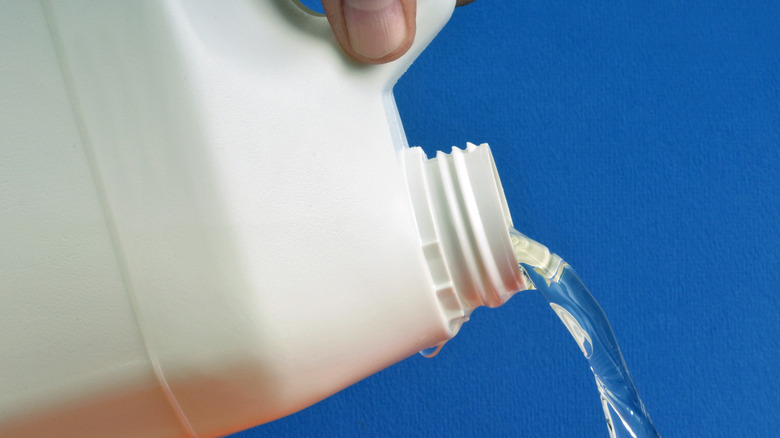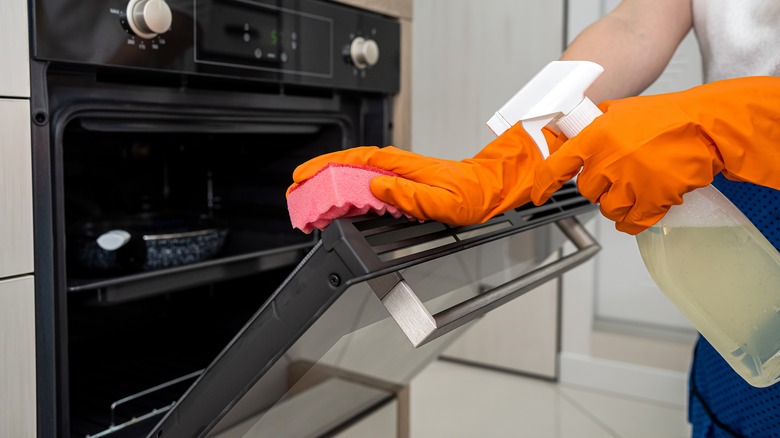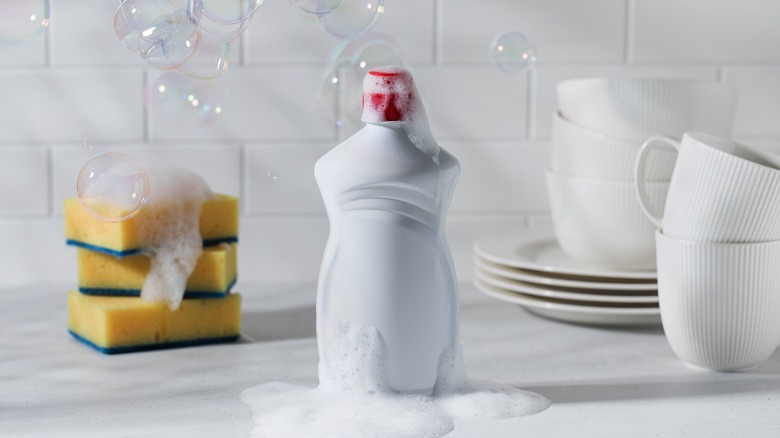Why You Should Think Twice Before Using Bleach To Clean Stainless Steel
Stainless steel is a popular choice for kitchens and bathrooms. It's durable, sleek, resistant to high temperatures, and easy to clean — at least, that's according to the Australian Stainless Steel Development Association. But, if you own stainless steel appliances, you might disagree that the material is stainless — or even easy to clean. Fingerprints and smudges seem to pop up out of nowhere, meaning the neat freaks among us are in constant cleaning mode.
When you're tackling a tough spot on your stainless steel fridge or stove, you might want to reach for a strong cleaning product like bleach. After all, it's effective at killing germs, fungus, and bacteria. Bleach also helps whiten laundry, and even hospitals use it for disinfecting.
However, while we might be tempted to spray bleach on all our surfaces for quick and easy cleaning, not every surface can handle the strength of this chemical — including stainless steel.
Bleach damages stainless steel
Since it's so strong and effective, bleach might seem like an easy solution to take care of those fingerprints on your stainless steel fridge or dishwasher. But don't make this rookie cleaner's mistake.
Stainless steel and bleach are not a good combination. Tom's Guide shares that bleach is corrosive to metals, meaning it can eat away at the surface and cause permanent damage to your appliances. Sounds pretty counterproductive, right? This also applies to other metals, like copper, silver, and chrome.
Bleach is safe for tile and similar surfaces, but remember to never mix bleach with other cleaning solutions, or else you might get a dangerous chemical reaction.
Instead of risking damage by attempting to clean your stainless steel appliances with bleach, here's the best way to tackle the chore.
How to clean stainless steel
Now that you know not to spritz your stovetop with bleach, how do you get those grease stains out of your stainless steel appliances? There are a few steps to achieve an effective clean.
Stainless steel surfaces are delicate, so HGTV suggests using non-abrasive cleaning supplies. Steel wool and brushes are too harsh and can scratch your appliances. These scratches on your stainless steel are not easy to remove, either. Instead, opt for reusable rags or microfiber cloths.
There are a few DIY concoctions to wipe those stainless steel surfaces clean. According to Good Housekeeping, the simple combination of everyday dish soap and water makes for an effective cleaning solution. Only a teaspoon of the grease-fighting soap mixed with a quart of warm water can get your stainless steel shining like new again.
Be warned: Some types of tap water may be too harsh for cleaning stainless steel, leaving water marks behind. A good alternative is using filtered or distilled water. Finally, any leftover fingerprints can be removed with mineral oil.


